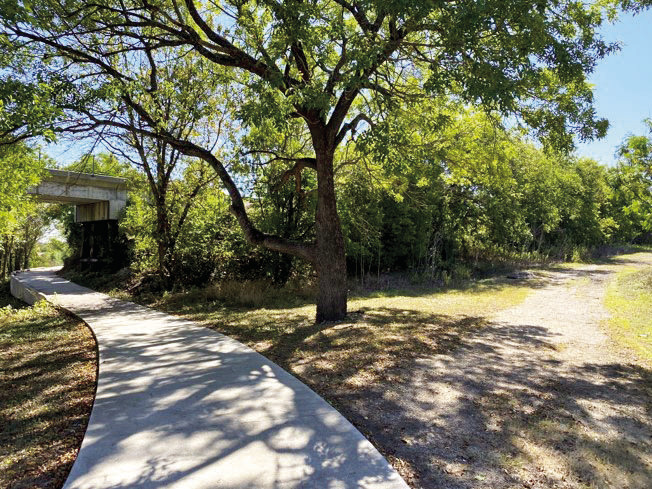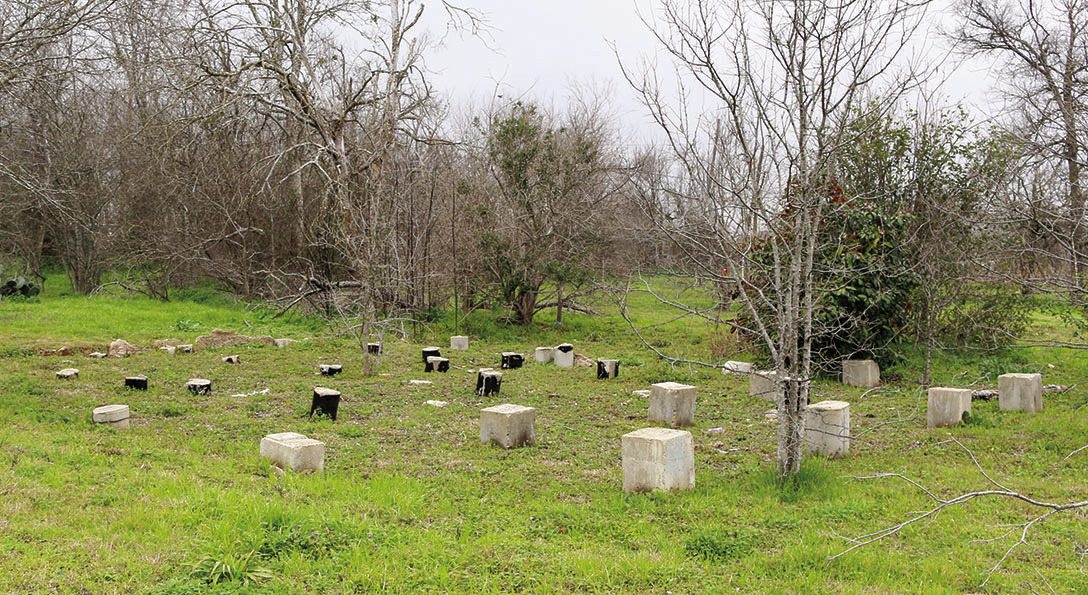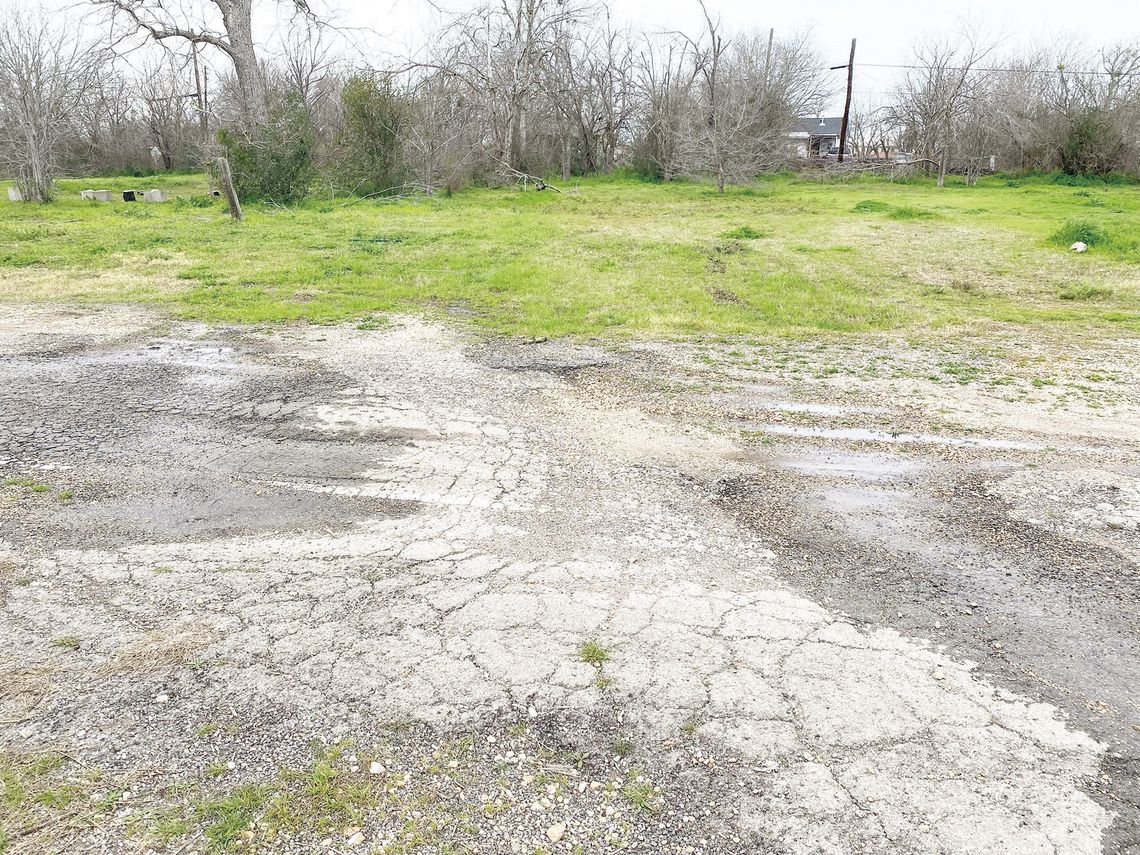EDIE ZUVANICH Special to the Press
David Legere envisions a thriving Murphy Street neighborhood with small affordable houses and a high quality of life for residents. He says that can’t happen with the current state of city-owned infrastructure in the neighborhood.
“The sewer lines serving surrounding properties have failed, allowing raw sewage to run through the neighborhood on many occasions. Our mowing guys can’t mow over there, the tractor gets stuck, it stinks, it’s a health hazard.
We wanted to make improvements over there but just keep running into roadblocks,” Legere said.
In addition to sewer line replacement, he said the street needs road repair and more water access for fire safety.
In January, Taylor City Council voted to add Murphy Street to a list of maintenance and repair projects being presented as part of a capital improvement bond initiative. The total bond amount is $20 million, with infrastructure repairs to Murphy totaling $1 million.
Dwayne Ariola, Taylor’s at-large council member, would like to see what a comparative evaluation of the benefits investing in Murphy Street repairs would bring to the people of Taylor versus using the money to fix other streets and improving the property value of existing tax-paying residents.
“There’s no physical people living on (Murphy Street) currently. I get that it’s advantageous we’ll get a future tax base out of it,” Ariola said. “In the meantime, there are other long-term citizens that will benefit that have been waiting. Have we done the study about how their values will go up?”
Ariola questioned how Murphy Street was chosen for repairs when so many other streets were in need. He specifically is concerned about Wabash Street, which was promised repairs years ago but got passed over in favor of fixing Robinson Street and is still waiting for its turn.
Community activist Jose Orta, who once lived on Murphy Street, said what Legere is working toward and what Ariola is fighting for are two different things.
On the surface it can be argued that the money is going toward infrastructure improvements but the similarity stops there, he said.
“Wabash has been waiting for a long time, just like Murphy Street. But Murphy is going to be getting new homes, and that’s important because we have got to limit the growth on the outskirts of town,” Orta said.
Legere started his efforts to bring new life to Murphy Street in 2015. Once a full neighborhood with families, businesses and a church, he found a street overgrown and forgotten by many, the houses demolished, the asphalt allowed to crumble. He said the street had become a dumping ground and homeless encampment, littered with drug paraphernalia, trash and even a rusted-out car, all occasionally swamped with sewage.
But Legere saw great promise in the area. The land sits on a ridge overlooking the municipal cemetery, is connected to Fourth Street by an accessible ramp, and is adjacent to the hike and bike trail. He hired crews to keep the land clean, mowed and worked with the city to disband the encampment.
The idea took a while to catch on with city leaders, but once the city focused its priorities in the Envision Taylor plan, the Murphy Street project found a receptive audience.
“Everyone at the city all told us this is the poster child for what we want to do in the downtown,” Legere said. “There are a number of properties in downtown that are not producing.
They are vacant, they have trash and blight. If you could do something with those properties that are already on your utilities grid you can generate more out of those. They produce much more return to the city.”
Orta, a LULAC representative, sent the Council a letter in support of the Murphy Street project. He believes it will have a positive effect on an entire section of what is traditionally a lowincome neighborhood. That area has also been designated by the county as a Health Equity Zone, signifying that needs extra attention for the quality of life of its residents.
Legere worked closely with city departments to develop plans for the community, even paying the city’s architectural firm rather than using his own, to ensure the development would meet Taylor’s requirements and vision. His final master plan included 34 small homes, some of which were designated as affordable housing models, something city leaders asked for. So, it came as a surprise when Ariola objected.
For his part, Ariola said he just needed more detail.
“Have we done that same (return on investment) study to other streets that are inhabited? If Wabash Street is fixed, will that entire hill’s property value go up because they now have a good street? By definition, isn’t that infill as well? Empty lots on a road that you almost need a 4x4 to get up...if fixed it could attract a developer,” Ariola said.
Even though the Murphy Street repairs are being presented to investors as part of the bond package, Ariola has said that after the May general election he may bring up the discussion again.










